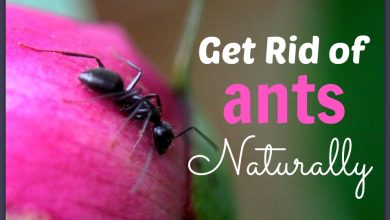Quite a show is the Pluma de Santa Teresa

Santa Teresa feather (Epiphyllum x hybridus) is also known as smelly reed, nopalillo or orchid cactus . It is of the genus Epiphyllum, which is made up of more than 20 species of epiphytic cacti. It belongs to the Epiphytic Cactaceae family and has its origin in several countries in America.

Do not stop reading: Beautify the garden with the colorful flowers of the Berlandiera lyrata
Characteristics of the Pluma de Santa Teresa
A succulent plant with a hanging habit , whose stems are wide and long and usually have thorns on the areoles. The flowers are almost trumpet-shaped, with many petals that can be white, pink or red, or a combination of them. Depending on the species, it can bloom during the day or at night.
Care of the Feather of Santa Teresa

It is a species that is used mainly as an indoor plant, in a ventilated place but without it being cold. You cannot be near places where the heating or radiators are, as it could seriously damage it.
It is convenient that it is in semi-shade. In the summer it can be outside, but without directly receiving the sun’s rays.
The Pluma de Santa Teresa cannot be at a temperature of more than 5˚C.
The ideal soil for this plant is a mixture of equal parts of coarse sand and mulch with leaves. Even cactus substrate can do the trick too.
As for irrigation, it should be applied abundantly throughout the year, but it does get flooded. Then minimize watering between fall and winter.
Composting should be done when you start to see the first shoots. So a cactus fertilizer should be applied every 15 days until the flowering stage is finished.
The best option for this plant to be propagated is through cuttings, since the seeds can take up to years to germinate.
Among the pests and diseases that can make it more susceptible are the woolly mealybugs, the red spider and an excess of water on its stems that could cause it to rot and present fungi.
There is no doubt that it is a plant that, due to its shape and beauty of the flowers, would be well worth having the home for that unique touch. Don’t you think? Do you like it? Have you seen it? if so, tell us more about it.
Images courtesy of: liquidmagic , Freeman Huang

![Photo of The Agrimony: [Planting, Care, Irrigation, Substrate and Pests]](https://www.complete-gardening.com/wp-content/uploads/2022/08/the-agrimony-planting-care-irrigation-substrate-and-pests-272x220.jpg)

![Photo of Striking Flowers: [List, Examples, Characteristics and Care]](https://www.complete-gardening.com/wp-content/uploads/2022/08/striking-flowers-list-examples-characteristics-and-care-390x220.jpg)
